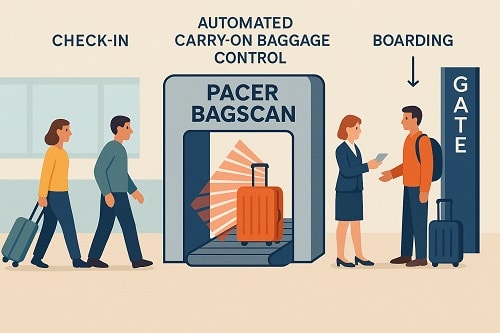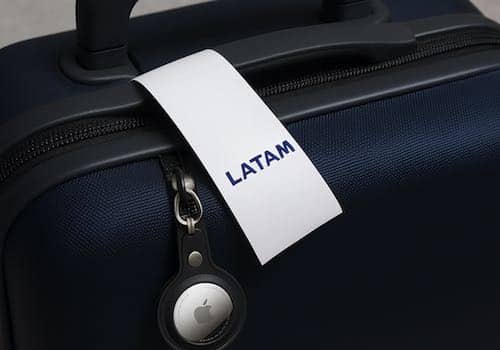

Pacer BagScan: Automated Carry-On Control to Cut Airport Delays
One of the most common causes of boarding delays is oversized carry-on baggage that slips through
earlier checkpoints and only gets flagged at the gate. This creates a domino effect of last-minute
checks, rushed bag tagging, and even aircraft departure delays. A new Brazilian solution,
Pacer BagScan, aims to tackle this problem with automation and smart measurement
technology.
Developed as part of a master’s thesis at Embry-Riddle Aeronautical University, Pacer BagScan is
designed to automatically detect carry-on luggage that exceeds an airline’s permitted dimensions,
before passengers reach the boarding gate. The result is a smoother boarding process, fewer surprises
for crew, and significant cost savings for airlines.
How the Pacer BagScan System Works
Pacer BagScan is essentially an automated sizing checkpoint for cabin baggage. As passengers move
toward the departure area, they pass through a dedicated lane where their carry-on bags are scanned
and measured in real time.
Using technologies such as laser or LiDAR sensors and computer vision, the system:
- Captures the dimensions of each carry-on bag as it passes through the scanner.
- Automatically compares the measurements with the airline’s allowed cabin baggage limits.
- Flags any non-compliant (oversized) bags for manual handling.
- Allows compliant bags to proceed with the passenger to the boarding gate without further checks.
The process is fully automated and does not require gate agents to manually place bags into metal
sizers or use tape measures. The system can also log data, helping airlines understand how often
passengers arrive with irregular carry-on baggage and how that impacts operations.
Where It Would Be Deployed in Airports
The key to Pacer BagScan is its placement in the passenger journey. Instead of checking bag size at
the boarding gate, the system is installed earlier, typically:
- After check-in and security screening, but
- Before passengers reach the boarding gate area.
In this “pre-boarding control zone,” all passengers with carry-on luggage pass through the BagScan
lane. Oversized bags are identified and can be redirected for check-in as hold baggage or processed
according to the airline’s policy. By the time travelers arrive at the gate, their cabin baggage has
already been validated, making boarding simpler and faster.
How Airlines Expect to Save Money
The motivation for Pacer BagScan is not just a better passenger experience—there is a strong
financial case behind it. Studies at a Brazilian airport showed that a significant share of
oversized carry-on bags were reaching the gate without being detected. When this is extrapolated to
all domestic operations, it represents tens of thousands of non-compliant bags per day.
The operational impact is substantial:
- Gate agents need extra time to tag and check in these bags at the last minute.
- Boarding is slowed down, causing delayed departures.
- Airlines absorb extra costs in ground handling and irregular operation management.
The study estimates that airlines in Brazil could be losing tens of millions of dollars per year
due to oversized carry-on baggage that is only identified at the gate. Some carriers reported up to
24 hours of cumulative operational delay per month linked to this issue alone.
By intercepting irregular bags earlier, Pacer BagScan can:
- Reduce gate congestion and boarding time.
- Lower the need for additional staff interventions.
- Improve on-time performance and aircraft utilization.
- Cut direct and indirect costs related to delays and rework.
A Step Toward Smarter, More Efficient Airports
Pacer BagScan fits into the wider vision of “smart airports,” where automation and data help
optimize every step of the passenger journey. Rather than relying on manual, inconsistent checks,
airlines can use an objective, automated system to enforce cabin baggage rules.
With a proof-of-concept deployment expected in Brazil, Pacer BagScan could soon become a new
standard for carry-on control. If successful, the system promises a triple win: fewer headaches for
passengers, smoother boarding for airport and airline staff, and measurable savings for airlines.
For airports and carriers looking to improve punctuality and reduce operational waste, automated
baggage control solutions like Pacer BagScan may be one of the most cost-effective next steps.
Source: Original concept and data based on reporting from
Aero Magazine (Portuguese)
.



